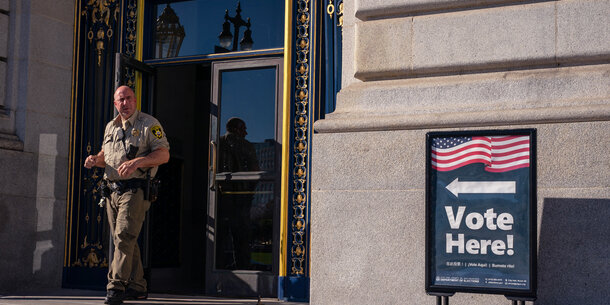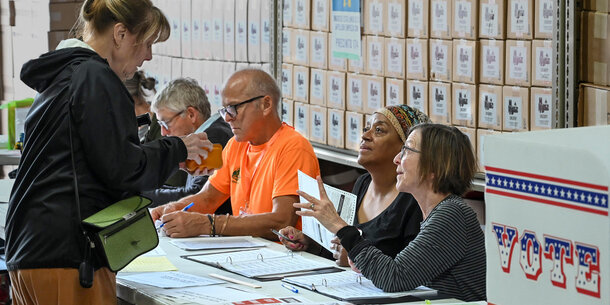With just three months to Election Day, there is little reason to believe the Covid-19 pandemic will “go away” before the 2020 general election. Consequently, there is lots of work to be done to make sure polling places across the country are safe come November. Many voters are used to voting in person and will not be willing or able to vote by mail. These voters need healthy in-person voting options this year.
With debate raging about safety precautions in areas from school reopening to professional sports, clear, evidence-based information about how to safely conduct in-person voting at polling places in November is critical to our nation’s well-being. Accordingly, the Brennan Center has partnered with the Infectious Disease Society of America (IDSA) to release Guidelines for Healthy In-Person Voting. The Centers for Disease Control has also issued recommendations for election polling locations, which we suggest reviewing.
Our Guidelines for Healthy In-Person Voting draw from the Brennan Center’s expertise in election administration, and the independent, interdisciplinary knowledge of the more than 12,000 infectious diseases physicians, public health officials, epidemiologists, and researchers that make IDSA one of the nation’s preeminent medical organizations.
Among our recommendations, the Brennan Center and IDSA advise counties to work with public health departments to develop a system for poll workers to check for any symptoms before their shifts and to ensure that the public is being monitored for spread. This might include personal health surveys to ensure workers are not exhibiting symptoms of Covid-19, free Covid-19 testing for poll workers prior to and/or following their shifts, and expanded testing opportunities for people who voted in person.
Another key element of safe and healthy in-person voting is ensuring there are adequate numbers of in-person voting locations. In primary elections this year, some jurisdictions suffered widespread polling place closures because of the Covid-19 pandemic. For instance, in Milwaukee 180 polling places were reduced to only 5 locations open on Election Day. A recent report by the Brennan Center found that voters with fewer polling places per voter reported longer wait times to cast their ballots. In the past, long wait times were disruptive and disenfranchising, but now, amid a pandemic, they could also be deadly.
Relatedly, we recommend that counties use voting locations that are well ventilated and can accommodate social distancing measures. Officials should also avoid recirculation of contaminated air and facilitate increased air flow in these locations by maximizing the HVAC capacity and using air filtration systems. Of course, in the event of a voting location change, voters should immediately be given individualized notice of the change, with a second notice to be given within weeks of the November election. And if polling places are moved out of senior care facilities or other residential sites, plans should be implemented to ensure that the residents of those facilities are able to cast a ballot.
Inside voting locations, surfaces will need to be sanitized to prevent transmission of the virus. This means poll workers should regularly (approximately every four hours) clean bathrooms and frequently touched surfaces, such as door handles. In addition, workers should sanitize voting booth surfaces, including voting machines, after each use.
The most critical piece of guidance in the Guidelines for Healthy In-Person Voting is that casting a ballot in person in November can be done safely, without endangering voters’ health. However, this will require careful and proactive planning on the part of election administrators, as well adequate funding from federal and state officials. The 2020 election is shaping up be a defining moment for our democracy. No voter should have to choose between their safety and their fundamental right to vote in November — and with the right policies, planning, and practices in place they won’t have to.



